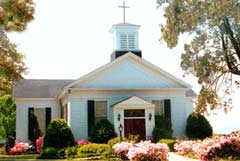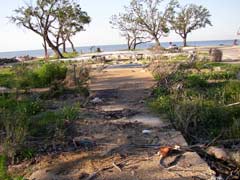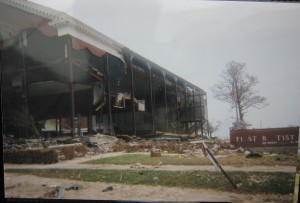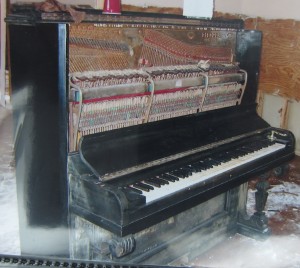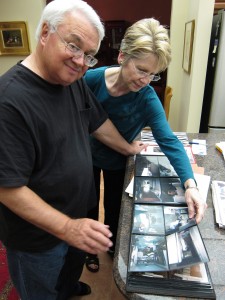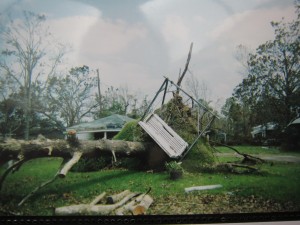31 Jan, 2012
Anyway you slice it, John “Shorty” and Patti Sneed of Gulfport, Mississippi have a lot to teach us. By profession, Shorty is involved in the insurance business, and Patti has recently retired from her position as choir director and organist at St. Mark’s Episcopal church. In addition to their careers, the Sneeds possess a multitude of talents that make them invaluable assets to the greater Gulfport community. Their roots in the area stretch back to the Antebellum past. Their family has known storms, and they know firsthand the pain of expectation shattered by the forces of what we call nature.

On the Sunday after Katrina, Shorty reads scripture on the ground where St. Mark's Episcopal Church once stood.
“Katrina gave a whole new definition to the word ‘gone,’” said Shortly over a photobook cataloguing the storm’s effect on Gulfport. St. Mark’s Episcopal, the church where Patti led music, was built in 1846. It was a sturdy structure that had been through its share of hurricanes. On the Sunday before Katrina, the priest suggested that this storm might be different. He urged parishioners to take what they could from the church to their homes for safekeeping. By the next evening, the church was completely leveled with no sign of debris. It was gone. GONE gone. Despite warnings from law enforcement agencies, the community gathered on the foundation the following Sunday to worship. The damage to the church reflected the losses the community endured in their personal lives. Economically and emotionally, the Gulfport community was leveled. The storm was something completely new in the form of a familiar hardship.
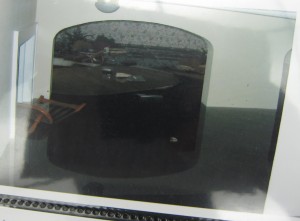
This is the Sneed home. This is in an area with the lowest flood risk in Gulfport. Patti was on the phone with Johnny in Los Angeles as the water started coming in the house. She repeatedly entered this water to retrieve items that she feared would be lost. She'd hand them to her elderly mother on the steps to the second level of the house. The damage was exhaustive.
Through his work in the insurance industry, Shorty is an expert in risk. He knew the dangers of flood and weather as understood by the industry. Casa Sneed is in what insurance agents call “Zone C,” with A being the area of most risk to flooding from the Gulf and bayou. They should have been safe. Yet, on the morning Katrina hit, Patti watched the water rise up their steps and up their glass doors until it started pouring in the front door. The water eventually flooded the entire bottom level of their house. When the water receded a few hours later, the damage was severe. The piano that Patti had bought as a girl by selling eggs was ruined. The appliances suffered a similar fate, as did the flooring and nearly everything on that level. The only survivors were the oldest furniture, which was built to last with mysterious strength.
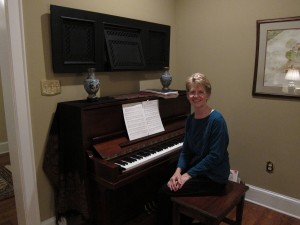
Fortunately, a relative gave the Sneeds their piano to replace the one they had lost. Above the new piano, you can see the elaborate front of the old piano.
Patti and Shorty’s son Johnny—Thad’s compadre, drummer, photographer, and actor extraordinaire—came back from the City of Angels to help his parents deal with the damage. Although they renovated the house, the storm forever changed the Sneeds’ impression hurricanes, floods, and the word “gone.”
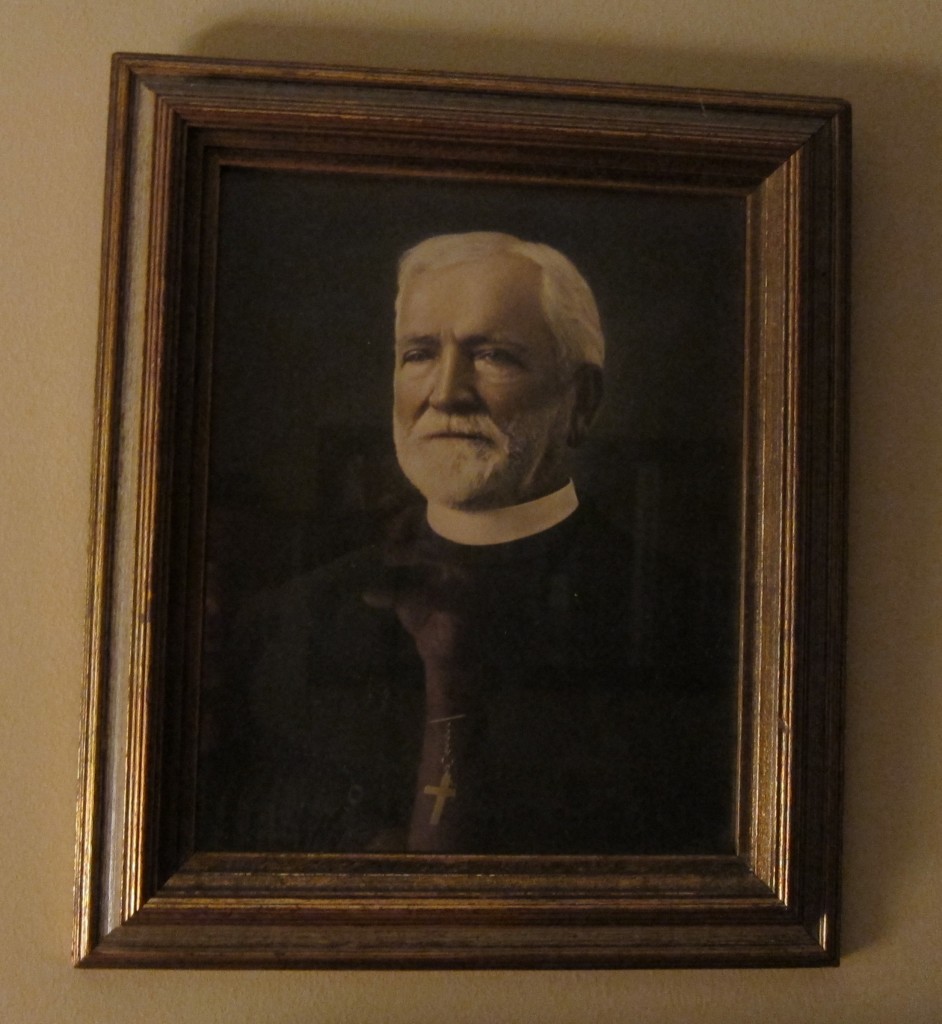
This dapper ancestor of the Sneed clan lived through many fine tales. While fighting in the Civil War, he saw some rough times. Before a particularly challenging battle, he prayed for his survival and promised to dedicate his life to the church if he were to make it through the battle. He was wounded, but he lived to become an Episcopal priest. The Sneed family's Gulf Coast Episcopal roots are deep, indeed.
Shorty and I discussed a recent Time magazine article that addressed the rise in catastrophic events in recent years. It is easy for those who have not experienced such catastrophe to put aside their concerns. For the citizens of Gulfport or Joplin, Missouri, it is no longer possible to ignore the warnings issued by climatologists. Yes: the planet has experienced shifts in weather and fluctuations in temperature in the past. But we are currently far off the charts of any previous experience. Like Hurricane Katrina, the changes to come will be unlike anything that our long history can reference. The Sneeds, St. Mark’s, and Gulfport can tell us a great deal about what we can expect from the unexpected. At some point, our lives will be redefined. Like “gone” is now understood in Gulfport, perhaps “change” will have different meaning in the hearts, homes, and communities of our friends and neighbors in the years to come.
Until we meet again
More attentive to the changes
Than we thought possible

This is a post-Katrina view of the Mississippi Gulf Coast. The old bridge on Highway 90 was destroyed. When most folks think about climate change, they think of erratic weather, polar bears, and melting glaciers. We forget about the onslaught of damage to infrastructure which could be economically devastating. In Gulfport, we have a hint at the sort of damage we can anticipate, and it is sobering.



